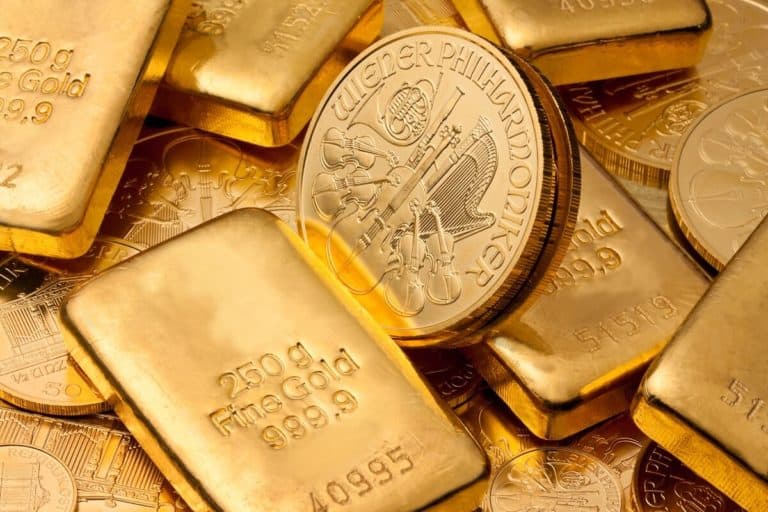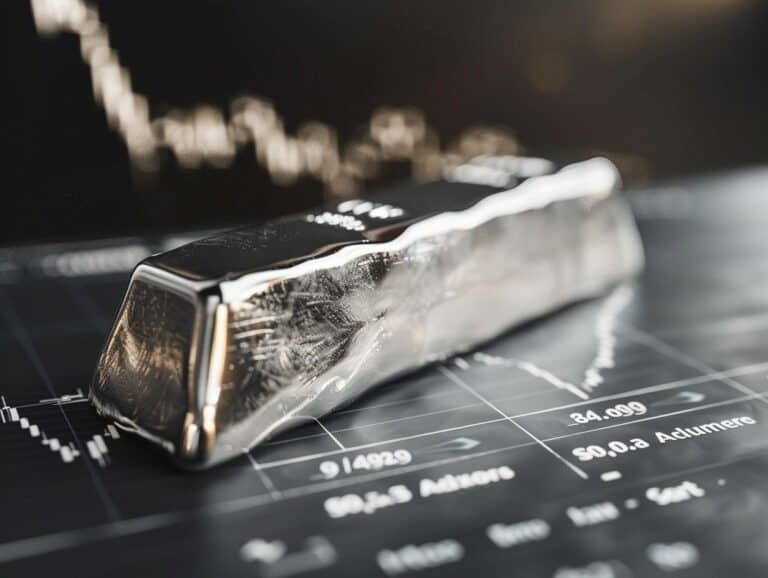Investors seeking to diversify their portfolios and hedge against inflation often turn to precious metals – and silver is one of them. While owning physical silver is often unmanageable, investing in Silver Exchange-Traded Funds (ETFs) can be a convenient alternative. These ETFs closely track the price of silver and offer greater liquidity than the precious metal itself. Read on and learn about the top 3 silver ETFs for 2023, their performance, and effective investment strategies to help you make informed decisions as an investor.
Why Invest in Silver ETFs?
Silver, like other precious metals, is often favored as a hedge against inflation and a safe haven during times of market turmoil. When the value of traditional currencies declines, or market uncertainties arise, silver tends to hold its value or even appreciate, making it an attractive investment option.
Additionally, silver ETFs provide investors with exposure to the silver market without the need to physically own and store the metal. This eliminates the logistical challenges and costs associated with purchasing and storing physical silver. Silver ETF funds offer ease of trading, liquidity, and the ability to invest with smaller amounts of capital compared to buying physical silver.
Factors to Consider When Choosing a Silver ETF
When evaluating silver funds, you should consider several factors to align your investment strategy with your goals and risk tolerance. Here are some of them:
- Performance – Analyze the historical performance of the silver index fund, including its one-year trailing total returns. Keep in mind that past performance is not a guarantee of future results.
- Expense ratio – The expense ratio represents the annual fee charged by the silver stock ETF provider. Lower expense ratios can significantly impact your overall returns, especially for long-term investments.
- Liquidity – Consider the average daily volume and assets under management of the ETF for silver. Higher liquidity generally translates to tighter bid-ask spreads and easier execution of trades.
- Investment strategy – Understand the underlying investment strategy of the ETF. Some funds hold physical silver, while others focus on silver futures contracts. Choose an ETF that aligns with your investment preferences and risk tolerance.
- Issuer reputation – Evaluate the reputation and track record of the ETF issuer. Established and reputable issuers often provide more reliable and transparent investment products.
Best Silver ETF Stock in 2023
1. SIVR: abrdn Physical Silver Shares ETF
The abrdn Physical Silver Shares ETF (SIVR) stands out as the top silver ETF based on its one-year trailing total returns. SIVR is a grantor trust that holds physical silver bullion in a vault in London on behalf of investors.
One significant advantage of SIVR is that it eliminates the risks associated with futures contracts, such as contango and backwardation. By holding only physical silver, SIVR provides investors with direct exposure to the silver market. However, it may not be suitable for long-term buy-and-hold investment strategies.
Key Details:
- Performance Over One Year: -27.6%
- Expense Ratio: 0.30%
- Annual Dividend Yield: N/A
- Three-Month Average Daily Volume: 503,759
- Assets Under Management: $835.3 million
- Inception Date: July 20, 2009
- Issuer: abrdn PLC
2. SLV: Silver Trust ETF
The Silver Trust ETF (SLV) is another popular option for investors looking to gain exposure to the price movements of silver. Similar to SIVR, SLV is a grantor trust that holds physical silver on behalf of its shareholders.
It aims to track the price set by the LBMA and provides investors with an inflation hedge and exposure to the daily movements of silver bullion. However, compared to SIVR, SLV has a higher expense ratio, which investors should consider when evaluating its potential returns.
Key Details:
- Performance Over One Year: -27.7%
- Expense Ratio: 0.50%
- Annual Dividend Yield: N/A
- Three-Month Average Daily Volume: 22,582,836
- Assets Under Management: $8.4 billion
- Inception Date: April 21, 2006
- Issuer: BlackRock Financial Management
3. DBS: Invesco DB Silver Fund
The Invesco DB Silver Fund (DBS) takes a different approach compared to SIVR and SLV. DBS is structured as a commodity pool, enabling investors to gain exposure to silver futures. As such, DBS is subject to risks associated with futures-backed contracts, including contango and backwardation.
DBS tracks changes in the DBIQ Optimum Yield Silver Index Excess Return, which consists of silver futures and the interest income from the fund’s holdings in U.S. Treasuries and money market securities. It’s important to note that DBS is designed for investors specifically interested in investing in silver futures rather than physical silver itself.
Key Details:
- Performance Over One Year: -29.8%
- Expense Ratio: 0.77%
- Annual Dividend Yield: N/A
- Three-Month Average Daily Volume: 2,061
- Assets Under Management: $14.6 million
- Inception Date: Jan. 5, 2007
- Issuer: Invesco
Risks Associated with Silver ETFs
While silver ETFs offer several benefits, it’s crucial to be aware of the potential risks involved. Here are some key risks to consider:
- Market volatility – Silver prices can be highly volatile, influenced by various factors, including global economic conditions, geopolitical events, and changes in supply and demand dynamics.
- Leverage risk – Some silver ETFs employ leverage, aiming to amplify returns. However, leverage also magnifies losses, increasing the risk for investors.
- Futures market risk – ETFs investing in silver futures are exposed to risks associated with futures contracts, such as contango and backwardation. These market conditions can impact the fund’s performance.
- Counterparty risk – In the case of ETFs holding futures contracts, there is a risk of default by the counterparty, which could impact the fund’s value.
- Tracking error – ETFs may not perfectly track the price of silver due to factors such as expenses, trading costs, and imperfect replication of the underlying asset. This tracking error can result in deviations from the expected returns.
How to Invest in Silver ETF?
Once you have selected your ETF for silver, considering your investment goals and risk tolerance, you will need to open a brokerage account with a reputable brokerage firm. Ensure that the brokerage you choose offers access to the specific Silver ETF you want to invest in. Next, deposit funds into your account through bank transfer, wire transfer, or electronic funds transfer.
Once your account is funded, use the brokerage’s trading platform to search for the ticker symbol of the ETF you want to invest in. Choose the type of order you want to place and enter the quantity of ETF shares you want to purchase. Before finalizing the order, review all the details to ensure accuracy, including the number of shares and the total cost. Once you’re satisfied, confirm the order.
After purchasing the silver fund, you can track its performance through your brokerage account’s portfolio dashboard. The value of your investment will rise and fall based on the price movement of silver.
The Bottom Line
Investing in silver ETFs provides a convenient and liquid way to gain exposure to the silver market. They remain an attractive option for investors seeking to diversify their portfolios and hedge against inflation. By considering the factors mentioned above and understanding the associated risks, you can make informed decisions when selecting the best silver ETF for your investment goals.
Article Sources
At Gold IRA Blueprint, we dive deep into the world of gold IRAs, using trusted sources to back up our insights. Our sources range from official documents to expert interviews, ensuring our content is both accurate and reliable. We also draw on research from reputable publishers to give you the most comprehensive understanding possible. Check out our editorial policy to see how we maintain our high standards for accuracy and fairness. Also make sure to check out our Financial Review Process to have a better understanding of our process.
- https://investingnews.com/daily/resource-investing/precious-metals-investing/silver-investing/5-silver-etfs-at-a-glance/
- https://money.usnews.com/investing/articles/whats-the-best-silver-etf-to-buy
Authors & Disclosures
- Our content is independently written and reviewed by trusted reviewers & fact-checkers.
- We can earn money by connecting you with top Gold IRA Companies. Learn how our reviews work.
- Want to learn more? Meet our authors and explore our editorial policy.















